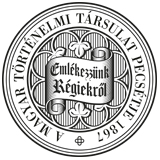Századok – 2011
MŰHELY - Csapody Tamás: Tálas András népbírósági pere. (Tálas András-e Radnóti Miklós gyilkosa?) I/197
TÁLAS ANDRÁS-E RADNÓTI MIKLÓS GYILKOSA? 213 rósághoz.9 7 A bíróság indítványának kiegészítésre kérte Tállas Annát.9 8 Ó háromoldalas válaszában többek között azt közölte, hogy annak idején édesanyjuk költségén az ország különböző részéről felhozatták a munkaszolgálatosokat a tárgyalásra. Az ő véleményüket azonban a bíróság figyelembe sem vette. Állítása szerint Tálast az Andrássy út 60-ban kegyetlenül kínozták. A börtönben rendszeresen látogatta bátyját, és jelen volt utolsó tárgyalásán. A bátyja elleni — általa nem konkretizált — vád hamis, mert szabadságon volt, és onnan már nem tudott alakulatához csatlakozni. Tálas András szerinte a ceglédi orosz hadifogolytáborba került.9 9 A Legfelsőbb Bíróság elutasította az indítványt, amit azzal indokolt, hogy Tállas Anna „nem a törvényben meghatározott és a felülvizsgálatot lehetővé tevő okra hivatkozott", tehát formai okokból utasította el az indítványt.10 0 így nem vizsgálhatta meg a Tállas Anna indítványában foglaltakat, vagyis nem vizsgálta a tényállás esetleges felderítetlenségét vagy az ítélet megalapozatlanságát. Tállas Anna családját halála után négy hónappal tudtam telefonon elérni.10 1 A beszélgetésből kiderült, hogy a Tálas-Tállas család mártírként tartja nyilván Tálas Andrást.10 2 THE TRIAL OF ANDRÁS TÁLAS AT THE PEOPLE'S TRIBUNAL (Was András Tálas really the Murderer of Miklós Radnóti?) by Csapody Tamás (Summary) During World War II some 6000 Jews and adepts of non-official Christian congregations were taken for forced labour to the Serbian village of Bor. In the course of the two-phase withdrawal about 3000 people departed from Bor and around 1600 arrived to Szentkirályszabadja. The Jewish forced labourers left Szentkirályszabadja for Hegyeshalom at the end of October, to be handed over to the German authorities. During the journey through Transdanubia, which led across Zirc, Pannonhalma and Győr, they, and among them the poet Miklós Radnóti, were escorted by a Hungarian military contingent. The captives were treated in an utterly inhuman way, many of them were beaten, some killed. A group of 22 Jewish captives, who were physically unable for further march, among them the poet, were executed by the bank of the river Rábca, near the village of Abda. One of the troops which escorted the march was 29-year-old sergeant András Tálas, who was born in Demecser. In 1945 he was put to trial az a war criminal for his misdeeds committed at Bor and in the course of the withdrawal. In his protracted process dozens of former captives were heard as witnesses. According to the registers of the trial, only one among them mentioned, and only once, Miklós Radnóti. And not even this witness said anything which would prove that Tálas actively participated in the beating of Radnóti. Moreover, the entire material relating to the trial is silent on the whole case of the executions at Abda and the murder of Radnóti. Nevertheless, the People's Tribunal convicted Tálas of having beaten two captives to death, having had another two executed, 97 A felülvizsgálati indítvány valamikor 1994 elején került beadásra, de a pontos dátum nem ismert. 98 A Legfelsőbb Bíróság kiegészítési kérelme. Nytsz.: ismeretlen. Bp. 1994. márc. 24. 99 Tállas Anna levele Dr. Pálinkás Györgynek, a Legfelsőbb Bíróság bírói tanács elnökének. Bp. 1994. ápr. 5. íoo a Magyar Köztársaság Legfelsőbb Bíróságának végzése. Bfv. IV 92/1994/4. sz. Bp. 1994. máj. 2. 101 Személyiségvédelmi okokból nem közlöm Tállas Anna unokájának nevét. Telefoninterjú. 2007. júl. 11. 102 Tálas András nőtlen és gyermektelen volt.
